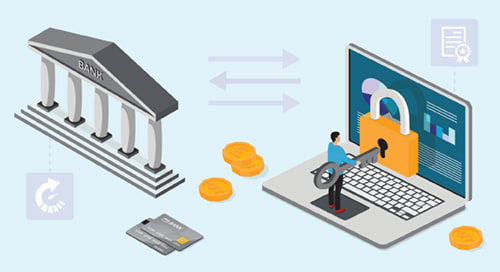All financial institutions are riding the wave of open banking and open finance, but they're not all going about it the same way. Some are embracing the idea of open banking by consuming APIs to enhance their own customer experience. Others are publishing APIs so their banking capabilities are available to a broader ecosystem of fintechs.
These two sides of open banking funnel into a conversation around a popular strategic theory: "red ocean" - defined as existing competitive markets with fierce competition - and "blue ocean," i.e., untapped market spaces with little or no competition.
Success in open banking requires both. Using APIs helps financial institutions stay competitive and enhances their customers' experience - many are already doing this. And publishing APIs to a broad ecosystem of third parties allows banks to position and manage APIs as products that enable embedded finance.
API Consumption: red ocean opportunities
- Financial institutions are the data recipient of open banking APIs
- Collected data is used to enhance the customer experience
- Financial institutions get a richer understanding of customer behavior
- Consumption focuses on retaining customers within your own channels
One study links open banking API adoption to an increase in revenue by 20%.
API Publication: blue ocean opportunities
- Financial institutions are providing data via open banking APIs
- Banking capabilities are made available to the broad ecosystem
- Capabilities can be embedded into the customer experience outside of your bank
- Financial services providers can discover new and unexpected revenue channels
Only 5% of banks publish open banking APIs externally to generate revenue.
It's not a question of whether banks should be data recipients or providers. To see greater ROI in their open banking investment, they need to learn how to do both. While using existing open banking APIs to create more dynamic digital experiences, banks need to make their own API capabilities available to the developer community in an API marketplace.
Unlock your financial data to reach new markets






